Windows 10 allows the user to share his locally connected printers and stored files with other users over the network. Shared files can be accessible for reading and writing to others. Shared printers can be used for printing on the remote computer. Windows uses 128-bit encryption to help protect file sharing connections by default. Some devices do not support 128-bit encryption and must use 40- or 56-bit encryption. Here is how to switch between file sharing encryption levels in Windows 10.
Advertisеment
By default, Windows 10 allows file and printer sharing only over a private (home) network. It is disabled when your network type is set to Public.
When you are signing in to your account and the first time your network is operational, Windows 10 asks you which kind of network you are connecting to: Home or Public. In a sidebar prompt, you are asked whether you want to find PCs, devices and content on the network that you just connected to.
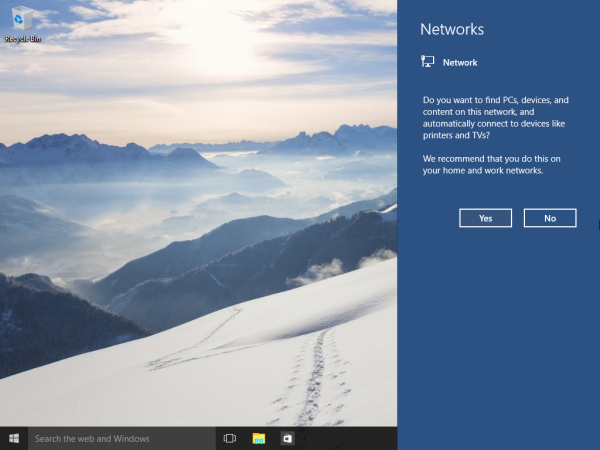 If you pick Yes, the OS will configure it as a private network and turn on network discovery. For a Public network, discovery and access will be limited. If you need to access your computer from a remote PC or browse the PCs and devices on your local network, you need to set it to Home (Private). For these network discovery and sharing features to work properly, file and printer sharing must be turned on.
If you pick Yes, the OS will configure it as a private network and turn on network discovery. For a Public network, discovery and access will be limited. If you need to access your computer from a remote PC or browse the PCs and devices on your local network, you need to set it to Home (Private). For these network discovery and sharing features to work properly, file and printer sharing must be turned on.
See the following articles:
- Change network location type (Public or Private) in Windows 10
- Change network location type with PowerShell in Windows 10
Let's see how to change the file sharing encryption level in Windows 10. Before proceeding, ensure that your user account has administrative privileges.
To change File Sharing Encryption Level in Windows 10, do the following.
- Open the Control Panel app.
- Go to Control Panel\Network and Internet\Network and Sharing Center.
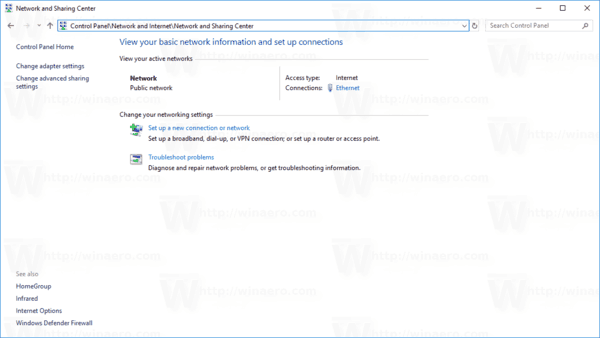
- On the left, click on the link Change advanced sharing settings.
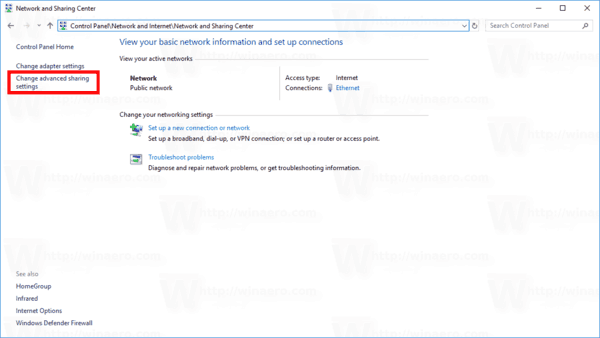
- On the next page, expand the All Networks section.
- Under File sharing connections, enable the appropriate option, Use 128-bit encryption to help protect file sharing connections or Enable file sharing for devices that use 40- or 56-bit encryption, according to what you want.
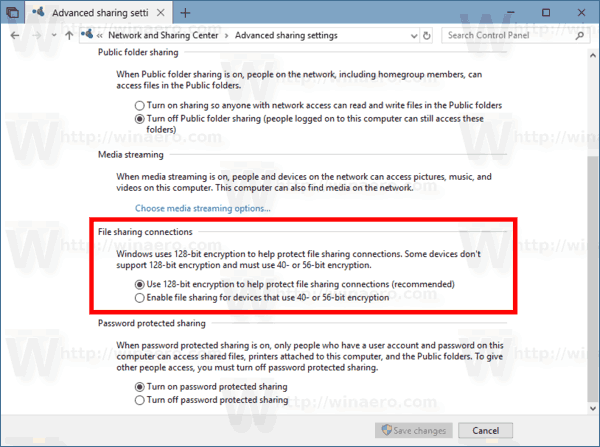
- Click on the button Save changes.
You are done!
Alternatively, you can apply a Registry tweak.
Change File Sharing Encryption Level with a Registry Tweak
Follow the instructions below.
- Open the Registry Editor app.
- Go to the following Registry key.
HKEY_LOCAL_MACHINE\SYSTEM\CurrentControlSet\Control\Lsa\MSV1_0
See how to go to a Registry key with one click.
- On the right, modify or create a new 32-Bit DWORD value NtlmMinClientSec.
Note: Even if you are running 64-bit Windows you must still create a 32-bit DWORD value.
Set its value to 0 for 40- or 56-bit encryption.
Set is value to 536870912 in decimal for 128-bit encryption.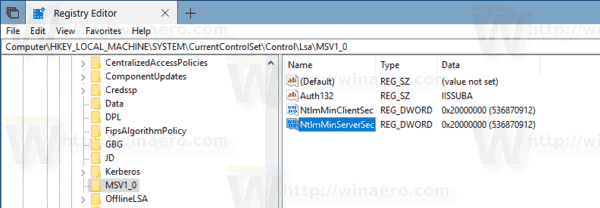
- Repeat the same for the value NtlmMinServerSec.
- Restart Windows 10.
To save your time, you can download the following ready-to-use Registry files:
That's it.
Support us
Winaero greatly relies on your support. You can help the site keep bringing you interesting and useful content and software by using these options:

File sharing was removed in 1803 :(
No, only the HomeGroup feature. I will cover how to use file sharing in recent versions of Windows 10.